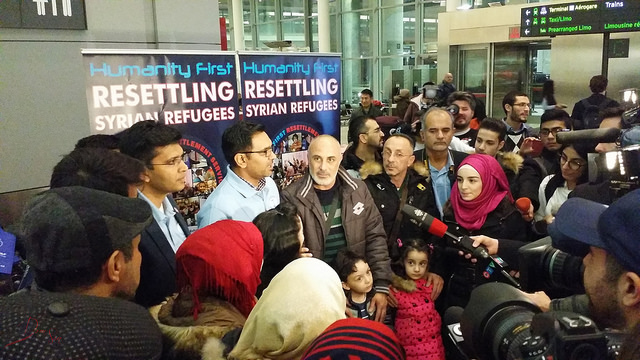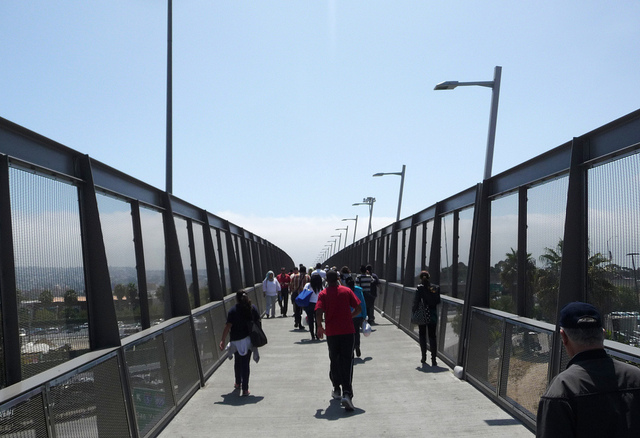District Court Denies Request for Temporary Restraining Order to Halt Syrian Re-Settlement Program in Texas
In their December suit, Texas Health and Human Services Commission V. United States, et, al., the state of Texas alleged that the United States government and the International Rescue Committee unlawfully attempted to re-settle six Syrian refugees in the city of Dallas without prior consultation and collaboration. According to Texas, the federal government failed to consult with the state regarding re-settlement of these refugees, and prevented them from receiving vital information relating to security risks posed by Syrian refugees prior to their re-settlement. Texas also claimed that the International Rescue Committee similarly failed to collaborate and consult with the Texas Health and Human Services Commission in advance prior to the re-settlement of these refugees. To protect itself, the state of Texas asked for an injunction and a temporary restraining order to halt the resettlement of Syrian refugees until security checks could confirm that these Syrian refugees do not pose a threat to the state of Texas.
On December 9, 2015 the U.S. district court denied the temporary restraining order, adding that the state of Texas failed to provide compelling evidence to suggest that Syrian refugees pose a substantial threat of irreparable injury to its citizens. Presiding district court Judge David C. Godbey added that, “the [Texas] commission has failed to show by competent evidence that any terrorists actually infiltrated the refugee program, much less that these particular refugees are terrorists’ intent on causing harm.” Although the lawsuit still stands and will likely not receive a final ruling until early next year, the district court set an important precedent in its denial of the temporary restraining order. Judge Godbey further maintained that it is not within the purview of the district court to assess what risk, if any, Syrian refugees pose to any particular state. Such risk can only be assessed by the federal government. On this issue Godbey stated that, “the Court has no institutional competency in assessing the risk posed by refugees. That is precisely the sort of question that is, as a general matter, committed to the discretion of the executive branch of the federal government, not to a district court.” The rest of the lawsuit remains in litigation.
CBP to Collect Exit/Entry Biometrics at Otay Mesa Port of Entry
Beginning December 10, 2015 through June 2016 Customs and Border Protection will begin capturing biometrics from certain non-citizen travelers entering and exiting the United States through the Otay Mesa pedestrian crossing. This new initiative was recently announced by CBP in an effort to secure the land border, address immigration overstays, identify persons of interest, improve the identification of non-citizens, and improve recordkeeping of foreign travelers entering and exiting the United States. Additionally, this new initiative will also protect citizens against identity theft and assist in the apprehension process of individuals providing fraudulent documentation to obtain entry into the United States. If the new initiative proves successful, the technology will likely expand to other ports of entry. According to San Diego Field Operations Director Pete Flores, “this test will help inform on next steps to developing and implementing biometric exit in the land pedestrian environment.”
Capturing a person’s biometrics is a process by which a person’s unique physical and other characteristics are detected through facial recognition, iris detection, and/or fingerprinting that is captured and recorded by an electronic device as a means of confirming a person’s identity. Biometrics are normally collected at US consulates and embassies abroad as well as USCIS field offices for individuals seeking to immigrate to the United States, to obtain a United States visa, or to obtain a travel document. For the purposes of the entry phase of this initiative, kiosks enabled with biometric capture technology will be placed in the pedestrian lanes of the Otay Mesa port of entry, which will take a facial photograph and iris image of certain non-citizens subjected to the test. The exit stage is expected to begin early next year. During the exit stage, non-citizen travelers departing the United States by air, will be required to present their valid passport and travel document at the kiosk. Such biometrics data will be compared to the data collected upon the non-citizen’s entry to the United States. U.S. Citizens will not be subjected to this test.
For more information, please contact our office.
 Visa Lawyer Blog
Visa Lawyer Blog





